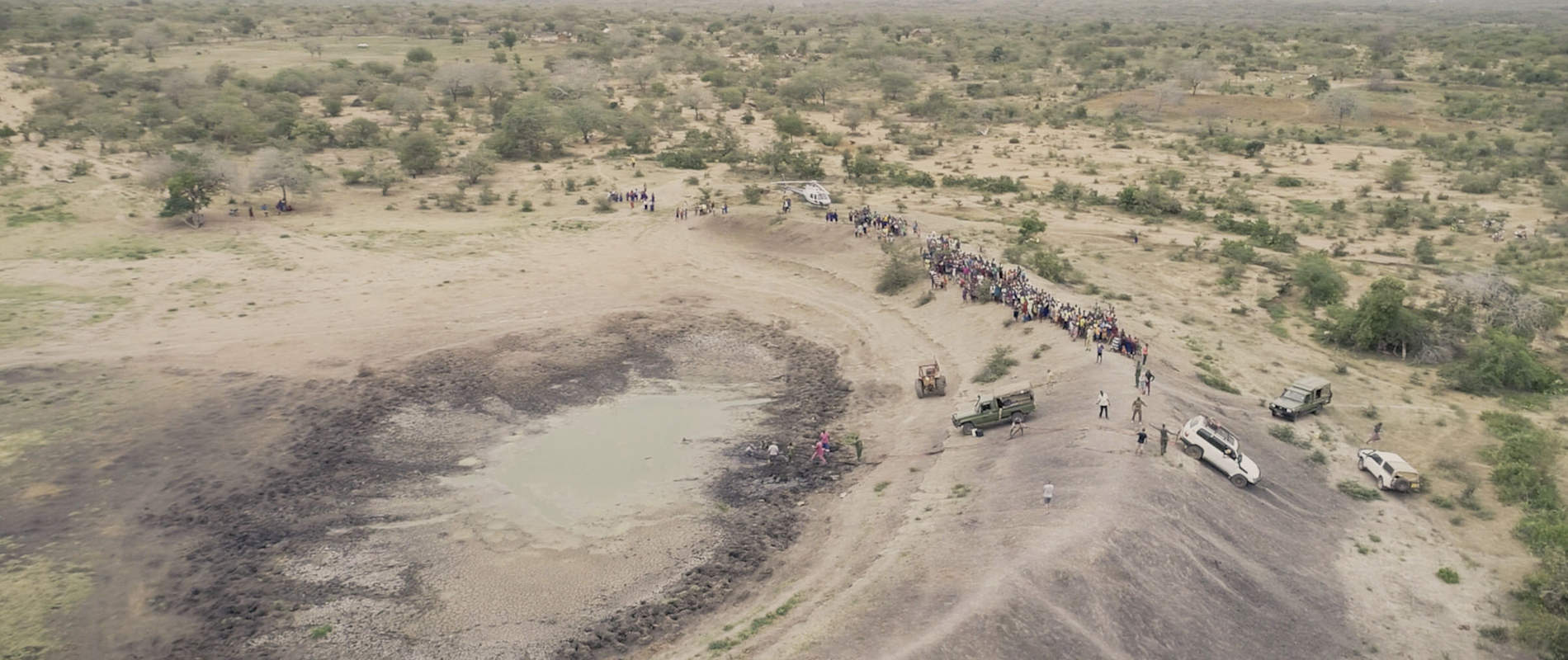It is an all-too-common situation during a drought: In their quest for water, elephants venture into drying dams. One slip turns into a treacherous situation, as they become hopelessly stuck in the mud. Confronted with slick floors and sticky mud, elephants are unable to propel themselves to standing. Without help, it becomes a death trap.
The latest muddy saga unfolded on 3rd September, after Wildlife Works received footage of two elephants stuck in a drying dam. They were located in the southern reaches of Kenya, near the Tanzania border.
First, we had to establish if the elephants were alive. The video had been taken two days prior, and it wasn’t a given that they had survived such a gruelling period trapped beneath the baking sun. KWS went to investigate and found that, miraculously, both elephants were still clinging on.
The rescue mission was on. We immediately mobilised our helicopter, picking up Dr Limo of the SWT/KWS Tsavo Mobile Vet Unit and Wildlife Works senior management before heading south. Wildlife Works had organised vehicles to meet us at the scene, which would be vital in pulling the elephants out.
And what a mission it would be: While neither of the elephants were full-size adults, both were sufficiently large and exceptionally stuck. Their location further complicated matters. They had become trapped within a few yards of each other, against the steep side of the dam wall. Even the most field-worthy vehicle would struggle to gain the traction needed to pull them out.
First, the team approached the larger of the two elephants, who was in her late teens. Her entire side was moulded in the mud, making it very difficult to secure straps around her. Fortunately, our innovative Kaluku welders had manufactured long, hooked poles for this very purpose. Between these helpful accessories and no small amount of digging, the team managed to weave the straps beneath her stomach, which were then attached to a vehicle on the other side of the dam wall.
As we predicted, the elephant’s position made it tricky for the vehicle to get sufficient traction. After several attempts, she was finally pulled free. Once on solid ground, she clambered to her feet — a bit wobbly after being recumbent for nearly three days, but otherwise unharmed. Dr Limo is confident that she will make a complete recovery.
We hoped that the second elephant would be easier, as she was about eight years old and quite a bit smaller than the first case. As it transpired, however, this was wishful thinking. One of the vehicles broke, so the team had to rely on a tractor that lacked the ideal horsepower for the job. On top of this, the glue-like mud made it difficult to snake the all-important straps beneath the elephant’s stomach.
However, perseverance paid off. As daylight waned, straps were finally secured and the tractor was put into position. With an almighty pull, the female was freed from her muddy trap and dragged onto terra firma. Much like the first elephant, she promptly got to her feet and ran off into the wilderness. Both should be completely fine — and, we hope, a bit wiser about the perils of drying mud.
Thank you for the crucial role you play in these rescue missions. As the drought continues to take hold, we will see these scenarios again and again. Indeed, the team was back in action just a few days later, saving a very special pair from the same muddy trap — a story which we will be sharing soon. Your support allows us to help elephants in their time of need, evening the scales as they navigate this challenging period.
